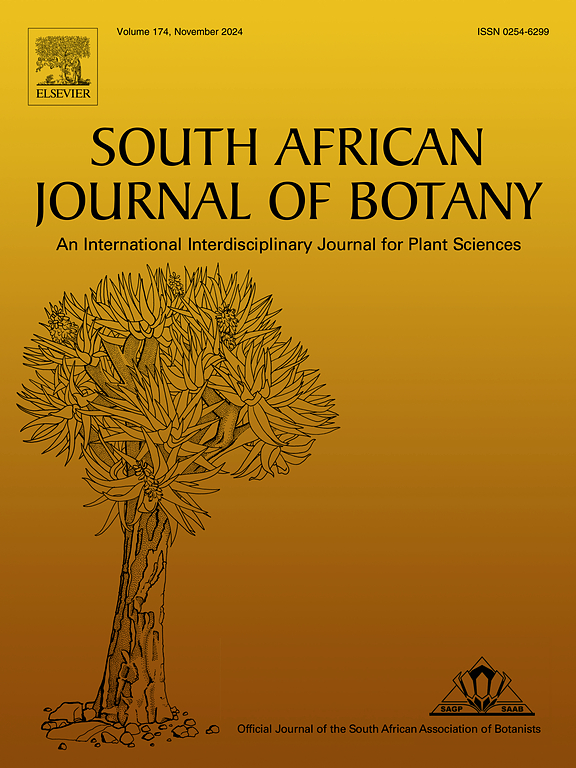文章题目南非林波波省的一新种
IF 2.7
3区 生物学
Q2 PLANT SCIENCES
引用次数: 0
摘要
最近在林波波东部悬崖上发现了阿特乌迪共结肠。它与albiflorus相似,但不同之处在于节间较短(约1.5-3毫米,而不是8-20毫米),花序轴上有浓密的白色被毛,花冠是淡紫色的,而不是白色的,不向口部收缩。它是林波波-姆普马兰加-斯瓦蒂尼悬崖的特有物种,并被建议保护为稀有物种。本文章由计算机程序翻译,如有差异,请以英文原文为准。
Syncolostemon attwoodii, a new species from Limpopo, South Africa
Syncolostemon attwoodii was recently discovered on the eastern escarpment in Limpopo. It is similar to, but differs from S. albiflorus by the shorter internodes (about 1.5‒3 mm, not 8‒20 mm) and dense white indumentum of the inflorescence axis and lilac rather than white corollas that do not constrict towards the mouth. It is endemic to the Limpopo-Mpumalanga-Eswatini Escarpment and has a suggested conservation status of Rare.
求助全文
通过发布文献求助,成功后即可免费获取论文全文。
去求助
来源期刊

South African Journal of Botany
生物-植物科学
CiteScore
5.20
自引率
9.70%
发文量
709
审稿时长
61 days
期刊介绍:
The South African Journal of Botany publishes original papers that deal with the classification, biodiversity, morphology, physiology, molecular biology, ecology, biotechnology, ethnobotany and other botanically related aspects of species that are of importance to southern Africa. Manuscripts dealing with significant new findings on other species of the world and general botanical principles will also be considered and are encouraged.
 求助内容:
求助内容: 应助结果提醒方式:
应助结果提醒方式:


